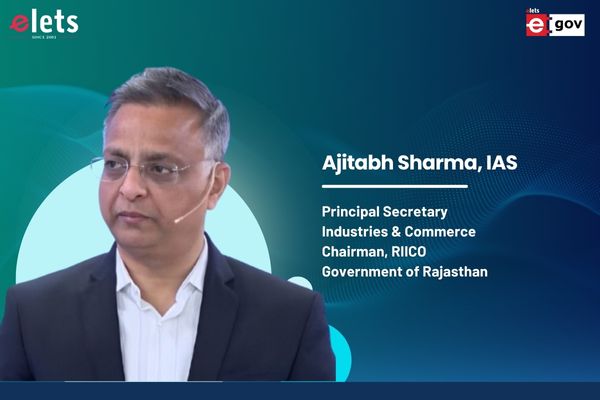
The basis for Swiss Development Cooperation is a federal law, dated from 1976. Already at this time, Swiss Legislators set the overarching goal of poverty reduction. The law thus helps us to focus and also enables us to operate with a mix of instruments towards that goal. Multilateral and Bilateral Cooperation, be it in the east or in the south, are different instruments that serve the same endeavor and complement each other. We set ourselves to focus on certain thematic and geographic priorities in order to use the resources effectively. Humanitarian Aid is essential to alleviate rapidly the sufferings in natural and man-made disasters and by its nature has a different approach than development cooperation. Even so, both activities are very tightly interlinked and we work hard to achieve an appropriate continuity in countries where we have a humanitarian intervention and then engage in longer term development activities.
What are the strategies of SDC to ensure coordination of development cooperation and humanitarian aid with other responsible federal offices?
Policy Coherence for Development is a key challenge for SDC. The federal law on Development Cooperation attributes the overall coordination of Swiss development policy and implementation to SDC. There are a number of coordination mechanisms in place to ensure coherent decisions. For example, on an operational level, different committees with our main partner in the Swiss administration, the State Secretariat for Economic Affairs (seco), meet regularly. On a broader level, SDC chairs an inter-ministerial committee which includes all federal offices concerned with development policy. On a political level the federal law has called into existence an advisory commission, composed by eminent personalities with interest in development cooperation, who represent the private sector, NGOs, academia and the political arena. This commission serves as consultative body to the federal council. These and other mechanisms together form a tightly woven web of communication between all relevant actors, in order to ensure coherence in our decisions.
It is stated that the main objective of all development cooperation activities is to improve the living conditions of the most deprived people on our planet. How does SDC explore the areas of maximum need?
At a global level, needs have been identified in the Millennium Declaration and Switzerland has committed to contributing to the achievement of the Millennium Development Goals (MDGs), as the other donor countries have done. The transformation of these goals into concrete action follows a country per country approach. For an effective poverty reduction, it is essential to have an in-depth knowledge of the context and conditions specific to each country. This is why SDC has established offices in each of the countries in which it is mainly working. In these Cooperation Offices, poverty analysis of the Government and of other stakeholders are gathered and specific needs as well as target groups are identified with the support of local professionals. Based on these assessments and SDC's own experience in ongoing projects and programmes, medium term strategies are being developed for each of SDC's partner countries. The main criteria are needs and potential.
What are the strategies and policies SDC implements for good governance? In which nations good governance has been effectively implemented and what role SDC has played in their success?
SDC's approach to good governance is anchored in one of the objectives of Swiss Foreign Policy: The promotion of human rights, democracy and the rule of law. The promotion of human rights and gender equality is a crosscutting issue in our development cooperation. This means:
The empowerment of poor and marginalized people, promoting equality and inclusion on the one hand and
Be a part of Elets Collaborative Initiatives. Join Us for Upcoming Events and explore business opportunities. Like us on Facebook , connect with us on LinkedIn and follow us on Twitter, Instagram.
"Exciting news! Elets technomedia is now on WhatsApp Channels Subscribe today by clicking the link and stay updated with the latest insights!" Click here!
Related Interview
Rajasthan’s MSMEs Embrace Digital Transformation with Robust Government Support
Ajitabh Sharma, IAS, Principal Secretary, Industries & Commerce and Chairman, RIICO, Government of Rajasthan, in an ...
Digital India Bhashini Revolutionising Language Accessibility with AI-Powered Solutions
Digital India Bhashini is a groundbreaking initiative designed to break down India’s language barriers using advanced ...
India’s Digital Transformation on the Fast Track
India’s digital landscape is undergoing a rapid transformation as the Ministry of Electronics and Information Technolo...
Innovate & Succeed with ‘Beyond Key’
With expertise in Application Integration and Data Analytics, the company delivers tailored solutions, streamlines opera...
Threads of change in Kerala's Water Tapestry
The Jalanidhi Project, led by the Kerala Rural Water Supply and Sanitation Agency (KRWSA), has transformed rural water m...
Bridging the Urban-Rural Divide with Innovation
In Lalitpur, a land where tradition blends seamlessly with resilience, a visionary idea took shape. Facing the challenge...
Indian Railways Reinvests Passenger Experience with Technology
The Thiruvananthapuram Division of Indian Railways is making significant strides in infrastructure development, technol...
Advancing Defence Computing - Logic Fruit’s Vision for SBC Innovation
With rising computational demands and India’s focus on self-reliance in defence technology, Logic Fruit is pioneering ...
Driving MSME Growth & Sustainability in Karnataka
Karnataka has long been a leader in promoting industrial growth and innovation, with the MSME sector playing a crucial r...
Karnataka’s Tech Ecosystem: Evolving for a Smarter Future
Karnataka has long been at the forefront of India’s technology and innovation journey, shaping the nation’s digital,...















